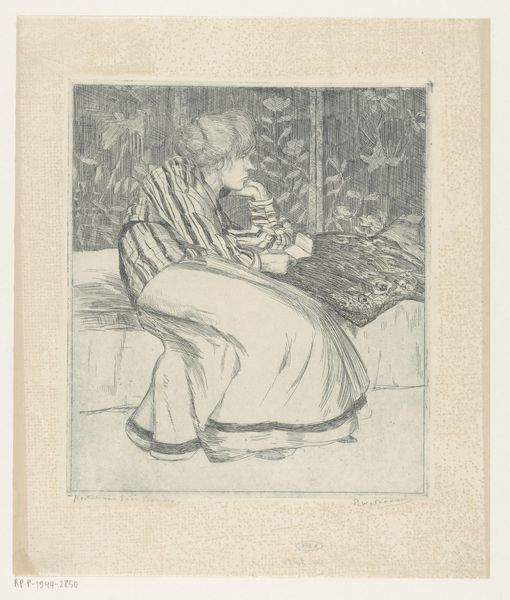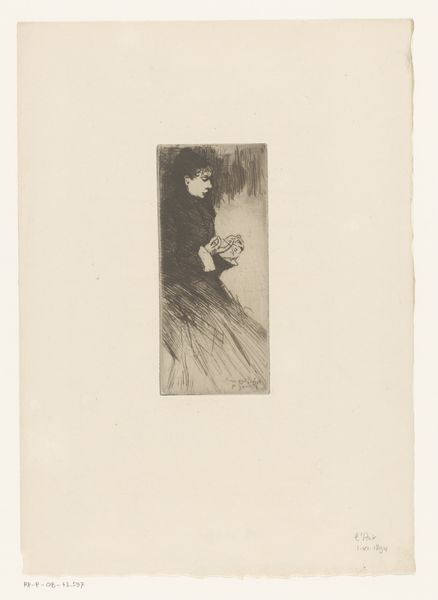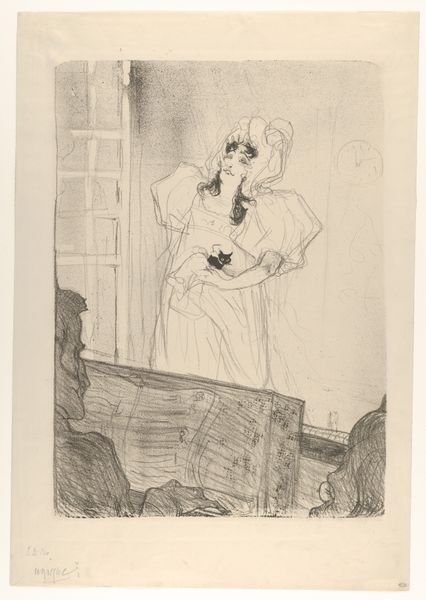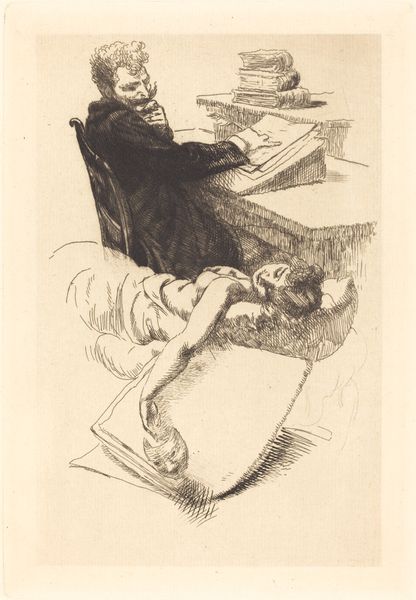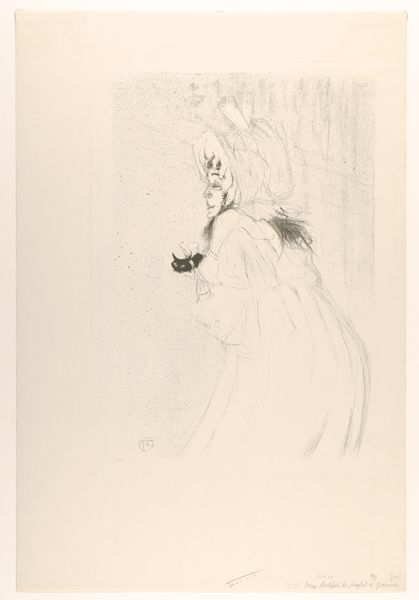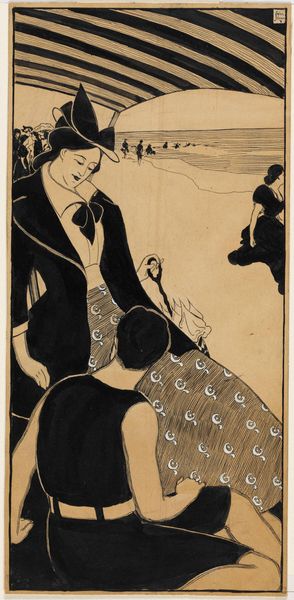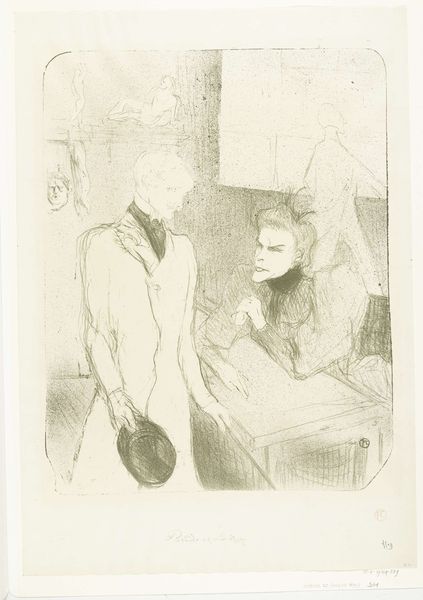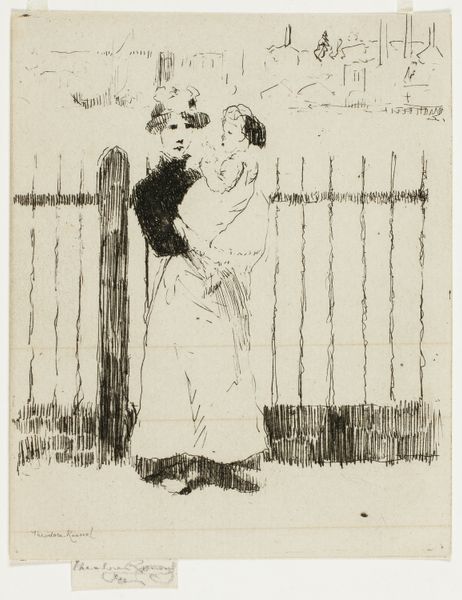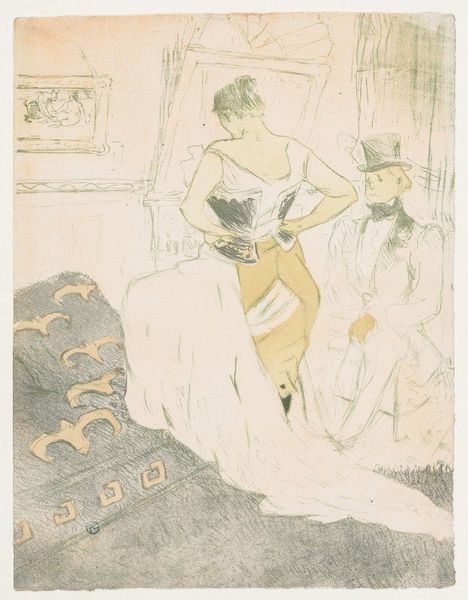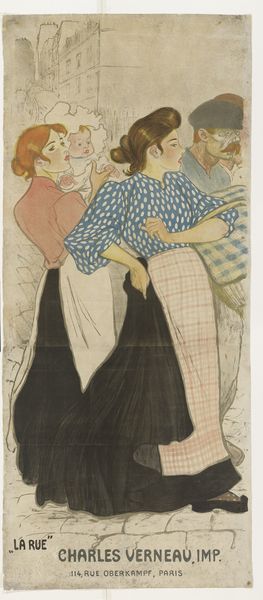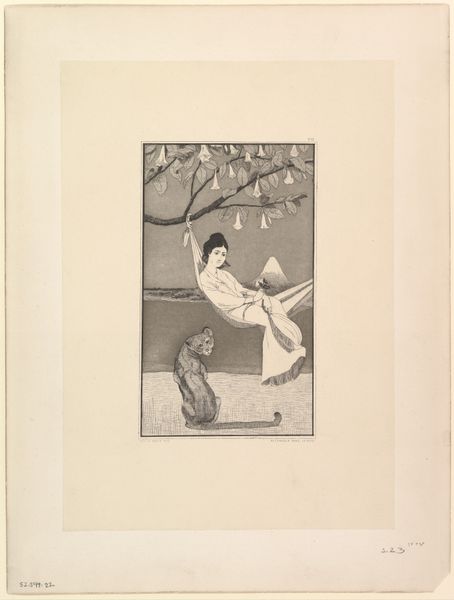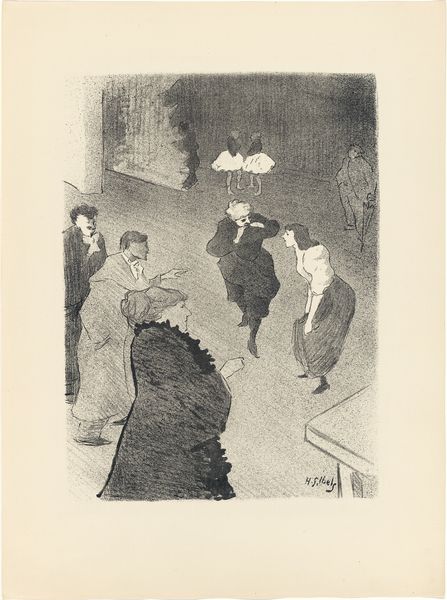
print, etching, intaglio
#
portrait
# print
#
etching
#
intaglio
#
japonisme
Dimensions: height 241 mm, width 161 mm
Copyright: Rijks Museum: Open Domain
Editor: This is Norbert Goeneutte’s "Zittende vrouw, omringd door Japanse waaiers" from around 1880, currently held at the Rijksmuseum. It’s an etching and it strikes me as quite a domestic scene, almost dreamlike because of the monochrome and all those floating fans! What are your thoughts on this print? Curator: Well, what immediately jumps out is the fascinating interplay between the depicted scene and the materials and labor involved in its creation. Goeneutte is engaging with Japonisme here, evident in the subject matter of the fans. Editor: Right! The Japonisme movement... Curator: Exactly. But I'm drawn to considering how these objects, the Japanese fans, themselves products of specific materials and modes of production in Japan, are then re-presented and re-contextualized through the very Western medium of etching. Do you think that translation changes the perception? Editor: It must. It feels… removed, like a copy of a copy. What do you mean by labour and modes of production? Curator: The labour involved in creating an etching—the physical act of scratching the image onto the plate, the use of acid, the printing process—becomes part of the artwork's story, separate from the manufacture of the depicted fans. Also, the access to Japanese art at the time was indicative of new modes of global trade. We consume so many of these imports, almost thoughtlessly. The print serves as an explicit connection to how artwork becomes integrated into new production methods and modes of dissemination of a product and idea. Editor: So, the print isn’t just *of* Japanese fans, it *is* a product of cultural exchange and industrial processes itself. Curator: Precisely. Thinking about the materiality, from the paper to the ink, and the labour, helps us move beyond just seeing it as a simple portrait and appreciate it as a complex cultural artifact. Editor: That’s really shifted my perspective. I'll definitely be more conscious of the materials and process behind the art from now on!
Comments
No comments
Be the first to comment and join the conversation on the ultimate creative platform.
